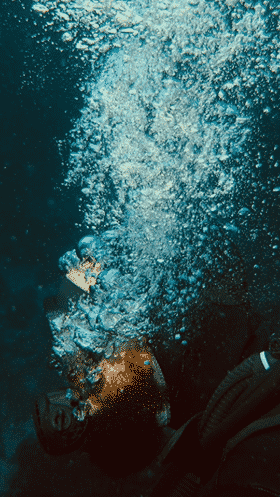As an anesthesia provider, I learned about Boyles Gas Law (P1V1=P2V2). “The absolute pressure exerted by a given mass of an ideal gas is inversely proportional to the volume it occupies if the temperature and amount of gas remain unchanged within a closed system….as volume decreases, pressure increases” so let us take that concept and apply it to diving. Any hollow space is subject to this law. Target organ for discussion (the lungs). Now, I could have picked the bladder, bowel, middle ear, sinus cavity, tooth extraction or really any air filled space, but I didn’t. Easier to stick with one organ and apply the principle to all others. I am specifically discussing compressible organs.
Now we must understand pressure in relation to depth. At sea level, we experience 1 atmosphere (ata) of pressure (14.7PSI) crashing down on our body. Talk about the weight of the world on our shoulders, yet we don’t even notice. As we descend every 33’ below the water, we add an additional atmosphere of pressure. Now, there are some nerds reading this and they will start commenting on conversion factors, salt versus fresh, salinity, etc… but I am trying to get the 30,000 ft view of Boyles.
So, let us think about this example. I am swimming in the ocean, I take a big breath and dive 66 feet below the water line. I have 3 ata of pressure at (44.1psi) applied to my lungs. Understanding Boyles law, as pressure increases the lungs decrease in size. I return to the surface and my lungs are back to the original size.
Now let us take that exact example and place us on SCUBA (Self Contained Underwater Breathing Apparatus). I submerge 66 ft, I am breathing the entire time, I take a big breath of air and hold my breath and rapidly ascend to the surface. Since, I was on SCUBA, I filled my lungs to their original size at 66 ft and did not let any air escape on my ascend and thru the laws of Boyle, my lungs exploded at the surface, i.e, Barotrauma. So, the next time someone tells you never to hold you breath upon ascent from SCUBA, you now know why! If you want to see it in action, watch your bubbles ascend and see them grow as they rise to the surface.

